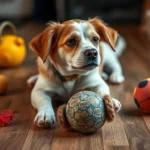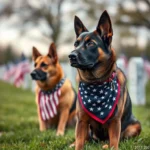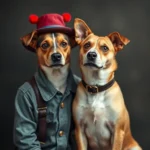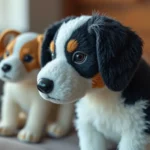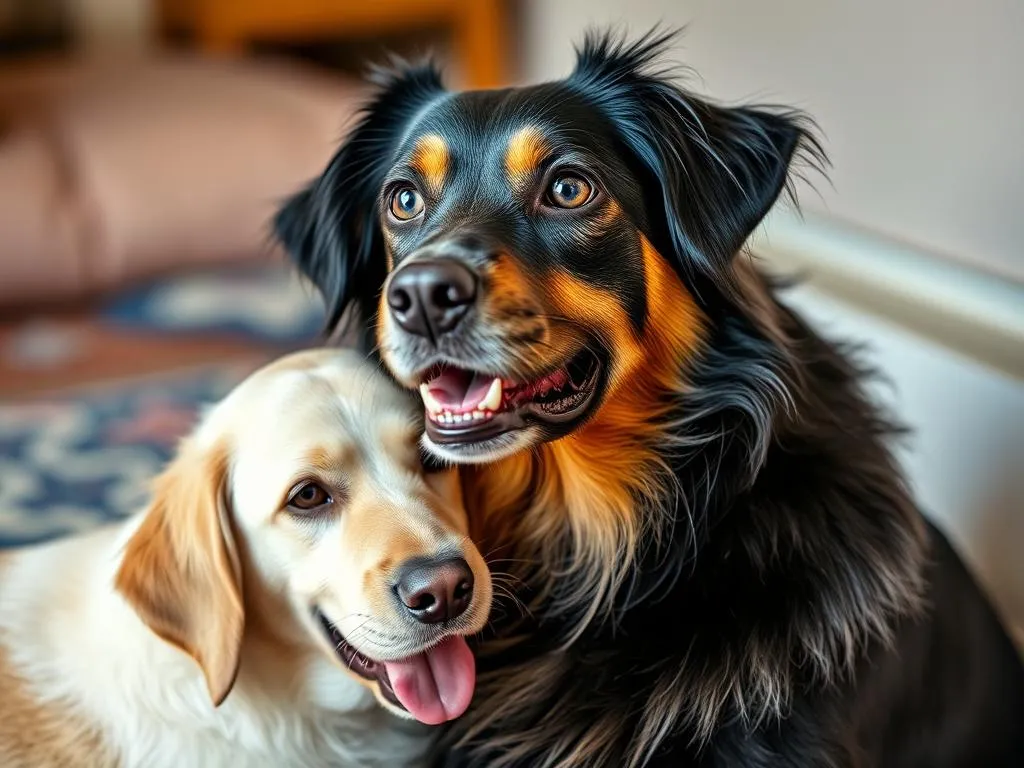
Introduction
Dogs are known for their loyalty and companionship, but have you ever wondered if dogs have a favorite person? Understanding dog behavior is crucial for pet owners who want to strengthen their bond with their furry friends. The concept of a “favorite person” can provide insights into how dogs form attachments and navigate their social environment. In this post, we will explore the factors influencing a dog’s preference for one person over others, the signs to look for, and the science behind this fascinating aspect of canine behavior.
Understanding Dog Social Structure
Canine Pack Mentality
Dogs are inherently social animals with a strong pack mentality. This social structure stems from their ancestry, where they lived and thrived in packs. Within these packs, a hierarchy often exists, determining the roles and relationships among members. When dogs enter a human household, they often view their human family as their new pack. Understanding this canine social structure helps us comprehend how dogs have a favorite person—the individual they bond with most closely in their human pack.
The Role of Humans in a Dog’s Life
Humans play a pivotal role in a dog’s life beyond just providing food and shelter. Dogs perceive their human family members as part of their pack, establishing relationships based on trust, affection, and mutual understanding. The bond between a dog and its favorite person often forms through shared experiences and emotional connections, reinforcing the idea that dogs are not merely pets but integral members of our families.
Factors Influencing a Dog’s Favorite Person
Time Spent Together
One of the most significant factors in determining if dogs have a favorite person is the amount of time spent together. Daily interactions—whether through walks, playtime, or training—can significantly strengthen the bond between a dog and its human. Dogs thrive on routine and familiarity, and the more time they spend with a particular person, the more likely they are to form a strong attachment.
Personality Compatibility
Dogs are incredibly perceptive and often gravitate towards humans whose personalities resonate with their own. For example, an active dog may prefer a person who enjoys outdoor activities and playtime, while a more laid-back dog might find comfort in a calm and quiet individual. This compatibility in traits helps foster a deeper connection, making it more likely for a dog to designate someone as their favorite.
Consistency and Routine
Dogs flourish in environments where they know what to expect. Consistency and routine play essential roles in solidifying the bond between a dog and its favorite person. Predictable interactions, such as feeding times, walks, and play sessions, create an environment of trust and security. A dog is more likely to develop a preference for a person who consistently engages in these routines, further emphasizing the importance of structured time together.
Signs a Dog Has a Favorite Person
Behavioral Indicators
Certain behaviors can indicate that a dog has a favorite person. Dogs may exhibit signs of attachment through actions such as following their favorite person around the house, seeking out their company during playtime, or resting close to them. If your dog consistently chooses to be near one specific person, it’s a strong indicator of that individual’s special status in the dog’s eyes.
Body Language
Understanding dog body language can provide valuable insights into their emotional state and preferences. When a dog interacts with its favorite person, it may display relaxed body language, such as wagging its tail, leaning into the person, or maintaining a soft gaze. Conversely, if a dog feels anxious or uncomfortable, it may exhibit signs such as cowering or avoiding eye contact. Positive body language is a clear signal that a dog feels safe and happy with its favorite person.
Preference in Activities
Another sign that dogs have a favorite person is their preference for engaging in activities with that individual. Whether it’s fetching a ball, playing tug-of-war, or simply enjoying a cuddle session, dogs may show a clear preference for certain toys or games when they’re with their favorite person. This selective engagement further emphasizes the bond between the dog and its chosen human.
The Science Behind Canine Affection
Research Studies on Dog-Human Relationships
Several research studies support the idea that dogs can form strong attachment bonds with humans. For example, studies have shown that dogs exhibit behaviors similar to those of infants toward their primary caregivers, such as seeking closeness and comfort. These findings suggest that dogs not only recognize their favorite person but also actively seek their presence and companionship.
The Role of Oxytocin
Oxytocin, often referred to as the “love hormone,” plays a crucial role in the bonding process between dogs and their favorite humans. When dogs interact positively with their preferred person, both the dog and human experience a surge in oxytocin levels. This biochemical response not only reinforces their emotional connection but also enhances feelings of trust and affection. Interestingly, research has shown that the oxytocin response is comparable between dogs and their favorite humans, highlighting the depth of their bond.
Can a Dog Have Multiple Favorite People?
The Concept of Shared Affection
While many dogs may have a clear favorite person, it is essential to recognize that dogs can also bond with multiple family members. The concept of shared affection suggests that dogs are capable of forming strong attachments to several individuals, each fulfilling different emotional needs. This ability allows dogs to thrive in social environments with multiple caregivers.
Factors That Allow for Multiple Bonds
A variety of factors can influence a dog’s capacity to bond with multiple people. The environment in which the dog lives, the level of socialization, and the individual dog’s personality all play significant roles. For instance, a dog that is exposed to various family members during formative stages may develop strong attachments to each person, as long as they consistently provide care, affection, and positive interactions.
Nurturing Your Dog’s Affection
Building a Strong Bond
If you’re looking to become your dog’s favorite person, there are several practical tips you can follow. Engaging in positive reinforcement training, spending quality time together, and participating in interactive play can significantly enhance the bond you share. Shared experiences create lasting memories and deepen emotional connections, ultimately fostering a stronger bond.
Recognizing and Respecting Boundaries
Understanding your dog’s comfort zones and preferences is vital for nurturing a healthy relationship. Dogs, like humans, have their boundaries, and respecting these boundaries is crucial for their emotional well-being. Whether it’s knowing when your dog wants to play or when it needs space, being attuned to their cues will create a more harmonious relationship without forcing interaction.
Common Misconceptions
The Notion of Jealousy in Dogs
A common misconception among pet owners is that dogs can feel jealousy, particularly when it comes to their favorite person. While dogs can exhibit behaviors that appear jealous—such as seeking attention when another pet or person is close—these actions are often rooted in their desire for attention and affection rather than true jealousy. Understanding this distinction can help owners navigate their dog’s social dynamics more effectively.
“Favorite Person” vs. “Favorite Toy”
It’s important to clarify the difference between a dog’s attachment to a human and its attachment to a favorite toy. While a dog may have a favorite toy that it loves to play with, this attachment is different from the emotional bond formed with a human. A favorite person fulfills emotional needs such as companionship and security, while a favorite toy primarily satisfies play instincts.
Conclusion
In conclusion, understanding whether dogs have a favorite person involves exploring their social structures, behaviors, and emotional needs. Dogs form strong attachments based on shared experiences, personality compatibility, and routine interactions. Recognizing the signs of a dog’s preference can help owners foster deeper connections and improve their relationships with their furry friends. By observing and nurturing these bonds, pet owners can ensure their dogs feel loved, secure, and engaged in their everyday lives. Understanding a dog’s emotional landscape is essential for creating a harmonious and fulfilling relationship, making it all the more rewarding to share our lives with these incredible companions.





